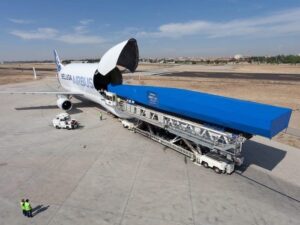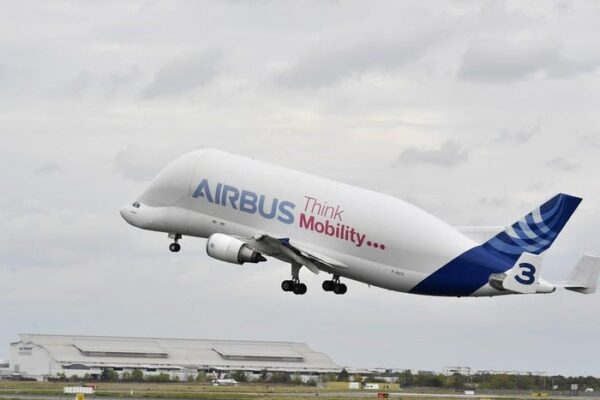Airbus Transport International (ATI) has started phasing out the Beluga ST (Super Transporter) with six new-generation Beluga XL aircraft that will take over its duties. The XL has 30% more cargo capacity than the fleet of five old ST model, which is progressively being made available for outsized freight transport services internationally and has already performed missions for various customers, while the XL service is only available in Europe.
The new cargo airline is known as Airbus Beluga Transport and was created by Airbus as air cargo remained in high demand during, and now after, the pandemic. Many carriers found they were able to use cargo to make up for the empty passenger seats during the travel lull caused by Covid-19. Additionally, port congestion causing shipping delays also created a boom in airfreight, increasing demand and pushing airlines to take on more shipments.
Despite being replaced, the BelugaST still has plenty of flight hours left in its life cycle and the company is finding a purpose for the fleet elsewhere. An Airbus BelugaST aircraft landed at the Kennedy Space Centre at Cape Canaveral in Florida last weekend to deliver the Airbus-built HOTBIRD 13G satellite for Eutelsat. This was the first time the plane has been seen in American skies since 2009.
The BelugaST carries cargo for industry sectors like engine and helicopter manufacturers, space industries, oil, gas, and energy providers, humanitarian supply distributors, and the military. This kind of cargo transport is possible because of the BelugaST’s massive interior cross-section, which is the largest of any available transport aircraft in the world.
The massive plane stands 56 feet tall, has a 24-foot diameter fuselage, a range of up to 2,500 nautical miles, and can carry over 100,000 pounds of payload.
The space can accommodate outsized cargo as large as 7.1 meters in height, 39 meters in length, and 6.7 meters in width.
Airbus explained both versions of Beluga will operate in parallel until the BelugaXL is fully commissioned. But, once the Super Transporter fleet is phased out, it will operate with its own staff under its own Aircraft Operator Certificate.
To handle the demand of the new international operation, Airbus has modified the Super Transporter with a new flight management system and new loading techniques and equipment. Specifically, Airbus developed an automated OnBoard Cargo Loader (OBCL) to enable missions from/to airports which do not have available any suitable loading/unloading platform.
The OBCL is able to handle payloads of up to 20 tons, can be stored and transported inside the plane, and can load and unload autonomously. In addition to the OBCL, the company redesigned its Outboard Platform (OP) to handle the heavier and longest payloads.
According to Airbus, the OPs will be strategically placed at different airports around the globe in preparation for shipments, but they can be easily moved on short notice.
The last innovation is Airbus’ new Multi-Purpose Pallet specifically developed to raise cargo five meters above the ground and load it directly into the Beluga’s nose.
The MPP’s first operational mission was the BelugaST’s flight to Kobe, Japan. The Super Transporter’s new role involved carrying a new Airbus Helicopter from the company manufacturing plant in Marignane, France, to Kobe, Japan. The entire helicopter was put into the cargo hold, with only the long rotor blades needing to be folded back to fit.
For all enquiries about air cargo, whether import or export, talk to us here at Colless Young. As licensed Customs Brokers and International Freight Forwarders, we professionally handle your consignments, by sea as well as airfreight. We provide a complete range of logistics services including packing, loading, trucking, warehousing, and cargo tracking. We are based in Brisbane and act at all Australian ports and airports.


